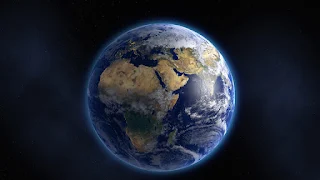Inhaling oxygen on Earth is now very simple, but its initial accumulation on the planet was not easy.
According to a new study, it took Earth about 200 million years to obtain oxygen, and scientists refer to this phenomenon as the Great Oxidation Event (GOE).
Scientists said that about 2.5 billion years ago, free oxygen, or O2, first began accumulating to significant levels in Earth's atmosphere, paving the way for the emergence of complex life on our evolving planet.
Scientists analyzed the ratios of stable thallium isotopes. The research team focused on marine rocks in South Africa, providing insight into the dynamics of ocean oxygenation during this crucial period in Earth's history.
By analyzing the ratios of stable isotopes of thallium and redox-sensitive elements, they discovered evidence of fluctuations in marine oxygen levels that coincided with changes in atmospheric oxygen.
“This event lasted at least 200 million years,” said Chadlin Ostrander, an assistant professor in the Department of Geology and Geophysics at the University of Utah. “Tracking the buildup of oxygen in the oceans has been very difficult until now.”
He added: "Emerging data indicate that the initial rise of oxygen in the Earth's atmosphere was dynamic, unfolding intermittently perhaps until 2.2 billion years ago. Our data confirm this hypothesis, and even go one step further by extending these dynamics to the ocean."
Ostrander's team had previously discovered that oxygen did not become a permanent part of the atmosphere until about 200 million years after the global oxygenation process began, much later than previously thought.
Conclusive evidence for the existence of an anoxic atmosphere is the presence of rare, mass-independent sulfur isotope signatures in sedimentary records prior to the Great Oxidation Event (GOE).
In fact, there are very few processes on Earth that can generate these sulfur isotope signatures, and their preservation in the rock record would almost certainly require the absence of atmospheric oxygen, according to the scientists.
During the first half of Earth's formation, the atmosphere and oceans were largely devoid of oxygen. This gas appears to have been produced by cyanobacteria in the ocean before the Great Oxidation Event (GOE), but in these early days the oxygen was rapidly destroyed in reactions with exposed minerals and volcanic gases.
The study found that signatures of rare sulfur isotopes disappear but reappear, indicating a rise and fall of multiple oxygen in the atmosphere during the Great Oxidation Event (GOE). This was not a single "event".
Ostrander stated that the Earth was not ready for oxygenation when oxygen production began. Our planet needed time to evolve biologically, geologically, and chemically to be suitable for oxygen.
He continued: "It's like a seesaw. You have oxygen production, but you have so much oxygen destruction that nothing happens. We're still trying to figure out when we tipped the scales completely and the Earth couldn't return to an oxygen-free atmosphere."


It's highlighting the intricate interplay between biological, geological, and chemical processes.
ReplyDelete